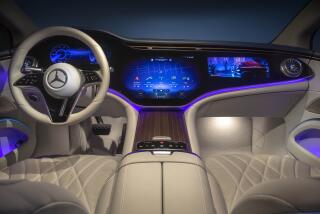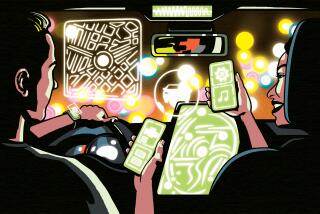Head-up displays to become more common in cars
Head-up displays on car windshields are expected to boom in the next few years, according to a new report from IHS Automotive.
Global sales of cars outfitted with HUDs are expected to rise to 9.1 million units in 2020, up from 1.2 million in 2012. Sales projections show a 7% climb to 1.3 million units this year.
The displays project essential information usually found in dashboards -- speed, RPMs, warning signals -- onto windshields. HUD images also have the potential to show more sophisticated data, such as navigation and safety features including blind spot detection and lane departure warnings.
The displays are projected by LEDs (light-emitting diodes) nestled underneath screens onto a series of mirrors. Vehicles feed data into processors, which then convert the information into graphics to display in images floating in front of drivers.
These systems let drivers âaccess critical material while keeping their eyes on the road,â said IHS analyst Ben Scott. That might come in handy as legislators and lower court judges continue to wrestle with cases related to distracted driving. According to Bloomberg, the National Highway Traffic Safety Administration issued guidelines in April for handling emerging technology as it affects drivers, urging carmakers to design screen-based systems to decrease the amount of time drivers need to take their eyes off the road.
Just 2% of cars sold worldwide in 2012 were equipped with HUDs.
ALSO:
Vehicle âinfotainmentâ systems out of sync with driversâ devices
AAA study on cellphones in cars: âHands-free is not risk-freeâ
Do cellphone distracted driver laws go too far? Courts will decide
Twitter: @c_s_green






